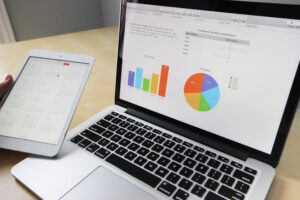Table of Contents
ToggleWhat is quantitative research?
Quantitative research analyzes numerical data, which helps to recognize correlations, make predictions, examine cause-effect relationships, and identify broad outcomes. It is used for various natural and social sciences studies, including biology, chemistry, psychology, economics, sociology, and marketing.
Quantitative Research Explained
What are quantitative research methods?
Numerous quantitative research techniques can be used for descriptive, correlational, and experimental research.
- Descriptive research: This method looks for an overall summary of study variables.
- Correlational research: This method allows the investigation of relationships between study variables.
- Experimental research: This technique is used to determine if a cause-and-effect relationship exists between two or more variables.
How to Combine Quantitative and Qualitative Research
Quantitative research seeks to answer questions and explore cause-and-effect relationships through the collection and analysis of numerical data. This form of research is categorized as either experimental or descriptive in its design. Descriptive studies only show relationships between variables, whereas experimental studies aim to demonstrate causation.
Quantitative research revolves around using numbers, logical reasoning, and an impartial approach. Its focus is on fixed and numerical data as well as focused thought processes like
Integration of the quantitative and qualitative approaches can then occur through methods in at least four ways: explaining quantitative results with a qualitative approach, building from qualitative results to a quantitative component (e.g., instrument), merging quantitative and qualitative results, or embedding one approach within another.
Advantages of quantitative research
Quantitative research is often used to standardize data collection and generalize findings. Strengths of this approach include:
Replication
A repeat of the study is achievable due to uniform protocols for data collection and literal interpretations of abstract ideas.
Direct comparisons of results
Direct comparison results are an advantage in that quantitative research can be repeated with other cultures at different times or by looking at alternative participants. Additionally, the results could be put through statistical analysis.
Large samples
Quantitative data analysis enables progressively accurate processing and analysis of data from larger sample sizes using reliable and consistent methods.
Hypothesis testing
If you use the well-known hypothesis testing procedures, it’s important to think about and outline your research variables, predictions, data collection, and testing methods before drawing conclusions.
Collect reliable and accurate data
Quantitative research is done when a researcher anticipates potential disagreement. The results it gives are highly accurate and dependable since they’re in numerical form, meaning they can’t mislead or be distorted. Furthermore, numbers always offer an honest perspective on the collected data.
Quick data collection
Quantitative research involves surveying a group of people that represent something larger, for the purpose of gathering data. This type of research is easy to conduct and analyze due to the statistical elements, and it doesn’t take as long as other methods.
Wider scope of data analysis
Another benefit of quantitative research is that the statistics provide a wide scope of data collection.
Eliminate bias
The quantitative research method offers no scope for personal comments or biasing of results. The results achieved are numerical and fair in most cases.
Disadvantages of quantitative research
While quantitative research provides many advantages, it is not always the best tool for understanding complex issues. Its downsides include:
Superficiality
Quantitative research can use numerical values to represent complex concepts such as mood, while qualitative research provides more explanation. However, using restrictive operational definitions in quantitative research may not be an adequate way of capturing these concepts.
Narrow focus
If certain variables and measurement procedures are predetermined, you might overlook other relevant findings.
Structural bias
Even when following standardized procedures, structural biases can still lead to wrong conclusions in quantitative research. This could include absent data, faulty measurements, or misguided sampling methods.
Lack of context
Quantitative studies typically happen in unnatural settings such as laboratories and don’t take into account the historical and cultural contexts which could impact data collection and results.
FAQ
What’s the difference between quantitative and qualitative methods?
Quantitative research is a data collection and analysis method focusing on numerical data. It allows researchers to systematically measure variables and test hypotheses to conclude the relationships between them. In addition, quantitative methods are often used to answer questions such as “how much?” or “how many?” which can be difficult to answer using qualitative methods.
What is mixed methods research?
Mixed methods research combines quantitative and qualitative data collection and analysis techniques to answer a research question. This type of research allows researchers to gain a more comprehensive understanding of their topic by combining the strengths of both quantitative and qualitative approaches. Mixed methods research can explore complex topics that require an in-depth understanding of the context while also providing reliable numerical evidence for further analysis.
What is data collection?
Data collection is the systematic process of collecting observations or measurements in the research. It is used in many different contexts by academics, governments, businesses, and other organizations.
What is hypothesis testing?
Using statistics, hypothesis testing is a formal procedure for investigating our ideas about the world. Scientists use it to test specific predictions, called hypotheses, by calculating how likely a pattern or relationship between variables could have arisen by chance.



